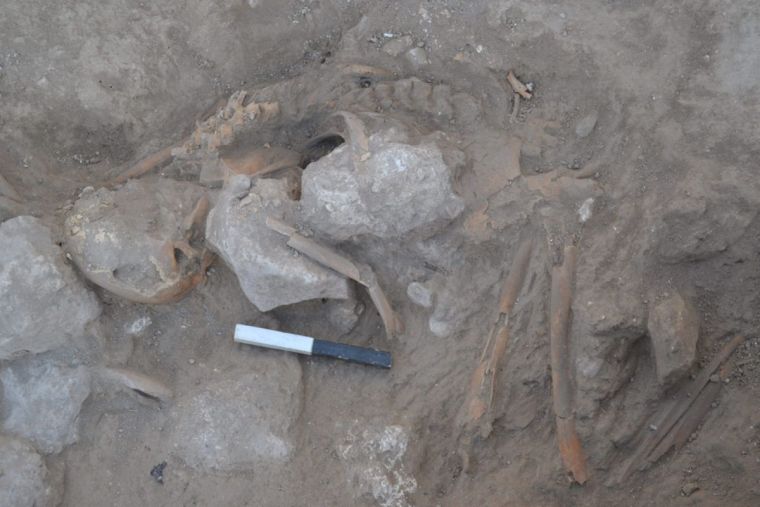Tragic human remains found at ancient biblical city
Human remains discovered at Gezer in southern Israel help confirm the Bible's account of the ancient city, according to archaeologists from a Southern Baptist seminary and the Israel Anquities Authority.

The remains of two adults and a child were discovered in a building that had been destroyed in an Egyptian attack in the 13th century BC.
Gezer is noted in the Bible as one of the cities overwhelmed by Joshua during the conquest of Canaan (Joshua 10:33, 12:12). It was burned again by the Egyptians in King Solomon's time (1 Kings 9:15-17) and rebuilt by him.
The bodies were uncovered in excavations by Southwestern Baptist Theological Seminary's Tandy Institute of Archaeology.
The Institute's Prof Steven Ortiz told Israeli newspaper Haaretz the discovery 'does fit in with what we know about Gezer in the biblical period.'
'The King of Gezer apparently was one of the leaders [in the region]. In the conquest accounts, we have him organising other Canaanite kings. So the biblical narrative has this memory of Gezer being an important city.'
Ortiz said that because the Egyptians preferred to take prisoners rather than killing those they vanquished, the death and destruction there was evidence of fierce resistance to them.
The city was on a key trade route and was caught up in a rebellion against Egyptian rule that began after the death of Ramses II. Pharaoh Merneptah wanted to re-establish his control over region and Gezer was one of several cities targeted. The Merneptah Stele, the first ever to mention Israel, says: 'Canaan is plundered with every hardship. Ashkelon is taken, Gezer captured, [and] Yano'am reduced to nothing. Israel is laid waste, his seed is no more.'
The skeletons were discovered inside the remains of a huge room under a metre-thick layer of ash and burnt bricks.
'The adult was lying on its back with arms above its head. The child, who was wearing earrings, was next to the adult, to the left. This room was filled with ash and collapsed mud brick,' Ortiz said. 'We can only guess what they were doing in the building on the eve of destruction. Were they hiding? Were they fleeing the Egyptian soldiers? Did they go back into the building to retrieve valuables?'
A third figure was found in another room under a pile of stones. 'This individual attests to the violent nature of the destruction, as it is clear he experienced the trauma of the event,' said Ortiz.
He suggested DNA tests might be conducted to find out more about the remains. It is not yet clear whether any can be recovered.











